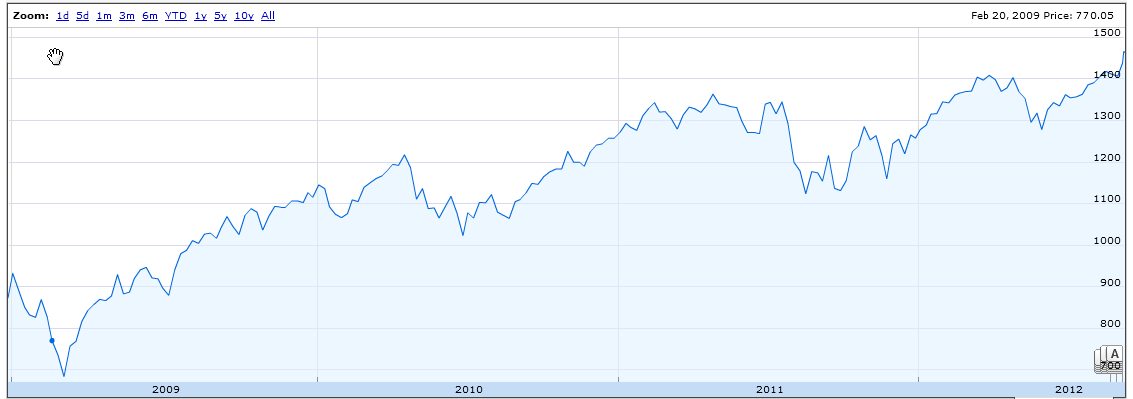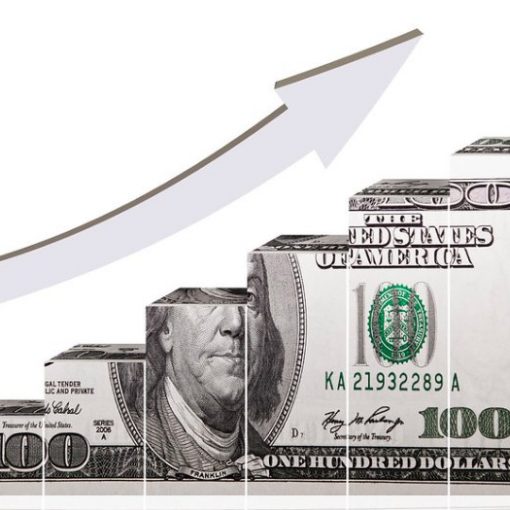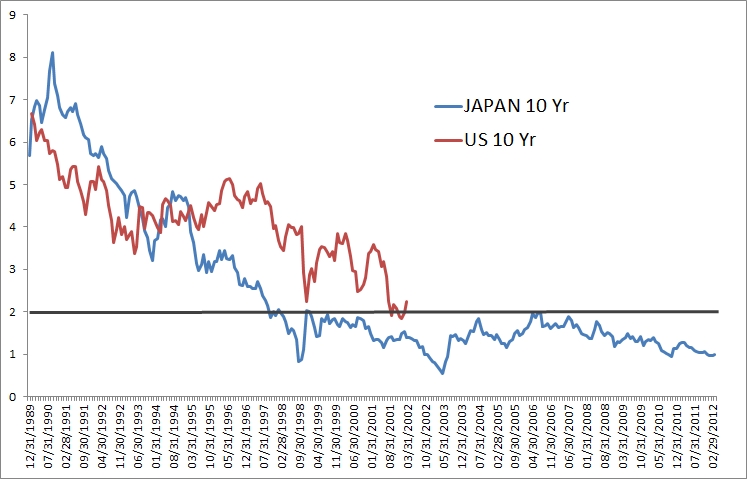by Michael Tarsala
Did you know that the S&P 500 is up 16% so far this year and has more than doubled off the 2009 lows?
Most investors do not. In fact, many think that the stock market declined in each of the past three years. It’s a likely reflection of negative investor sentiment that still lingers after many investors were burned in the 2008 financial crisis.
As Jeff Benjamin at Investment News reports, Franklin Templeton asked 1,000 investors whether they thought the S&P 500 was up or down over each of the past three years; 66% thought it was down in 2009, 48% thought it was down in 2010; 53% thought it was down last year.
The S&P actually rose 26.5% in 2009, 15.1% in 2010, and 2.1% last year.

Source: Google Finance
Staying extremely risk averse and mostly or completely out of stocks may be perceived as safe. But it may be hurting some investors.
Invest $10,000 in a money market account — one of the most conservative investments out there — and you’ll earn 0.16%, on average, according to Bankrate.com. That works out to $16 a year. That is likely not enough to even make up for future inflation.
So in real terms, that account is likely losing money over the long haul.
Treasury bonds are yielding more, but still less than 2% since May. Depending on the inflation rate going forward, it offers a very slight gain, if any at all.
Stocks are riskier investments than bonds of course, and they are not for everyone.
However, there are strategies that invest in dividend-paying stocks, most of which are less volatile than the market overall.
There is a good deal of academic research that says that low-beta stocks will outperform the market over the long haul. That flies in the face of the long-held theory that investors are paid more to take on extra risk.
 One investment model that focuses on low-beta stocks is Dividend and Income Plus, run by investment manager and former Charles H. Dow Award-winner Bill DeShurko. The strategy focuses on income generation instead of market return, including low-priced securities with stable dividends. Most holdings in the model are less volatile than the market as a whole.
One investment model that focuses on low-beta stocks is Dividend and Income Plus, run by investment manager and former Charles H. Dow Award-winner Bill DeShurko. The strategy focuses on income generation instead of market return, including low-priced securities with stable dividends. Most holdings in the model are less volatile than the market as a whole.
A fairly new offering with a similar strategy is the High Dividend Low Volatility investment model run by LakeView Asset Management. It holds a mix of 20 to 30 stocks and exchange-traded funds that seeks to produce above-average dividends, while exhibiting below-average volatility.
Low volatility investing may be one way to re-enter the market using a more conservative strategy.
To learn more about low-volatility investing or to simply talk about your investment strategy and options, give Covestor a call at 866-825-3005 X 703.
Certain of the information contained in this presentation is based upon forward-looking statements, information and opinions, including descriptions of anticipated market changes and expectations of future activity. We believe that such statements, information, and opinions are based upon reasonable estimates and assumptions. However, forward-looking statements, information and opinions are inherently uncertain and actual events or results may differ materially from those reflected in the forward-looking statements. Therefore, undue reliance should not be placed on such forward-looking statements, information and opinionsDid you know that the S&P 500 is up 16% so far this year and has more than doubled off the 2009 lows?



